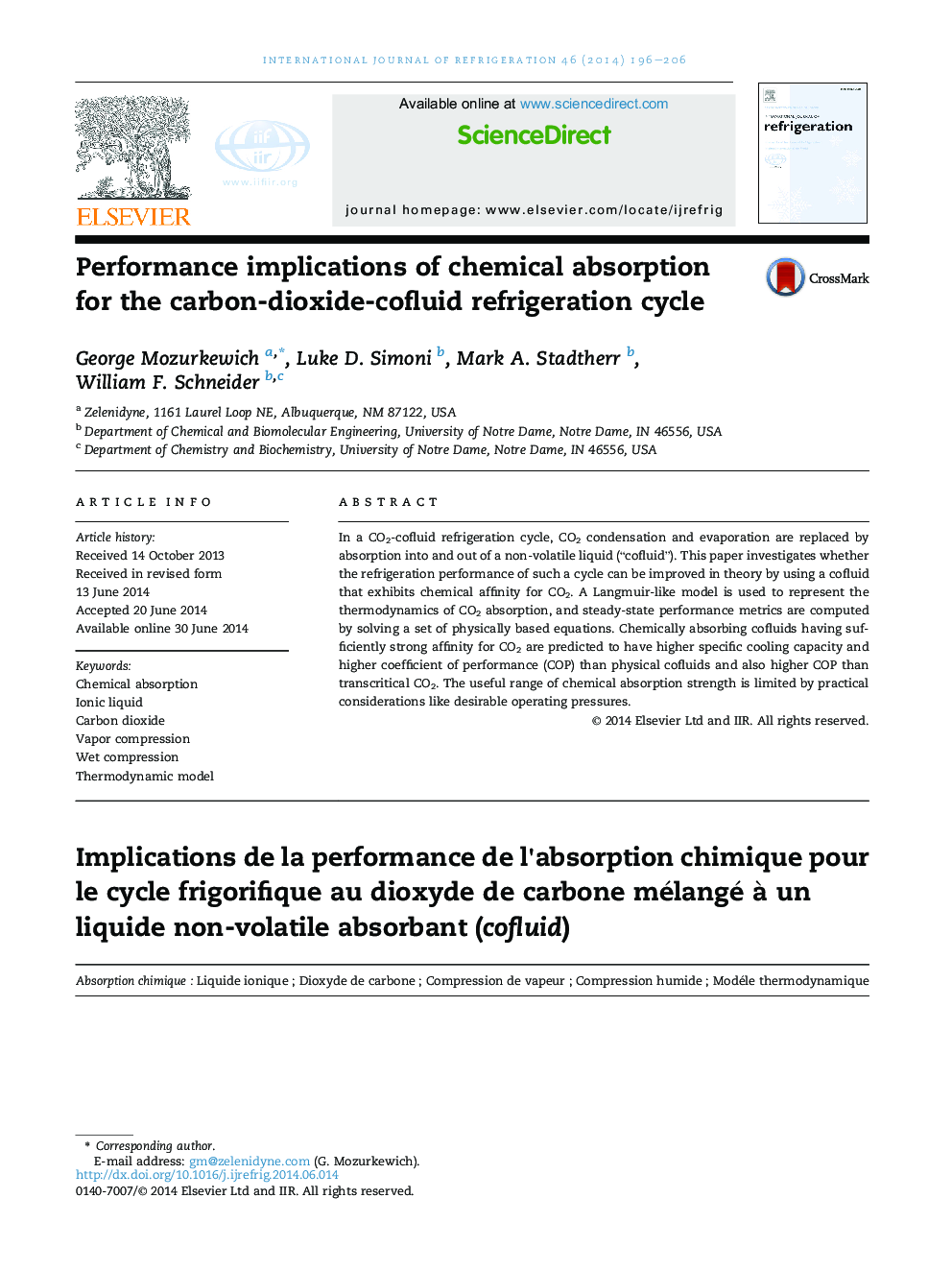| Article ID | Journal | Published Year | Pages | File Type |
|---|---|---|---|---|
| 792759 | International Journal of Refrigeration | 2014 | 11 Pages |
•Usage of a chemical absorber in a CO2-cofluid vapor-compression cycle is modeled.•Chemically absorbing cofluids have higher COP and capacity than physical cofluids.•Performance depends strongly on absorption strength.•Maximum performance is limited by minimum acceptable operating pressures.
In a CO2-cofluid refrigeration cycle, CO2 condensation and evaporation are replaced by absorption into and out of a non-volatile liquid (“cofluid”). This paper investigates whether the refrigeration performance of such a cycle can be improved in theory by using a cofluid that exhibits chemical affinity for CO2. A Langmuir-like model is used to represent the thermodynamics of CO2 absorption, and steady-state performance metrics are computed by solving a set of physically based equations. Chemically absorbing cofluids having sufficiently strong affinity for CO2 are predicted to have higher specific cooling capacity and higher coefficient of performance (COP) than physical cofluids and also higher COP than transcritical CO2. The useful range of chemical absorption strength is limited by practical considerations like desirable operating pressures.
